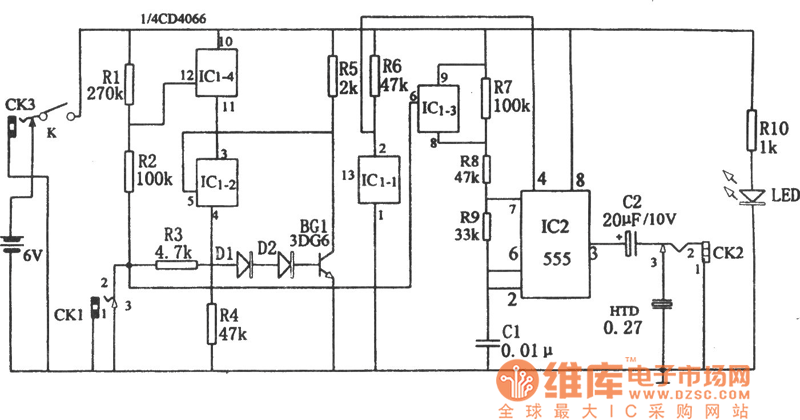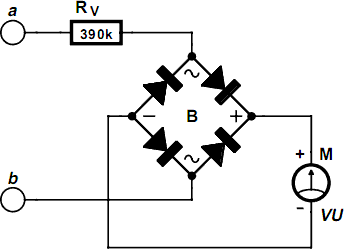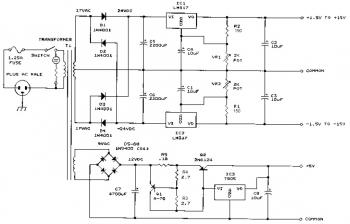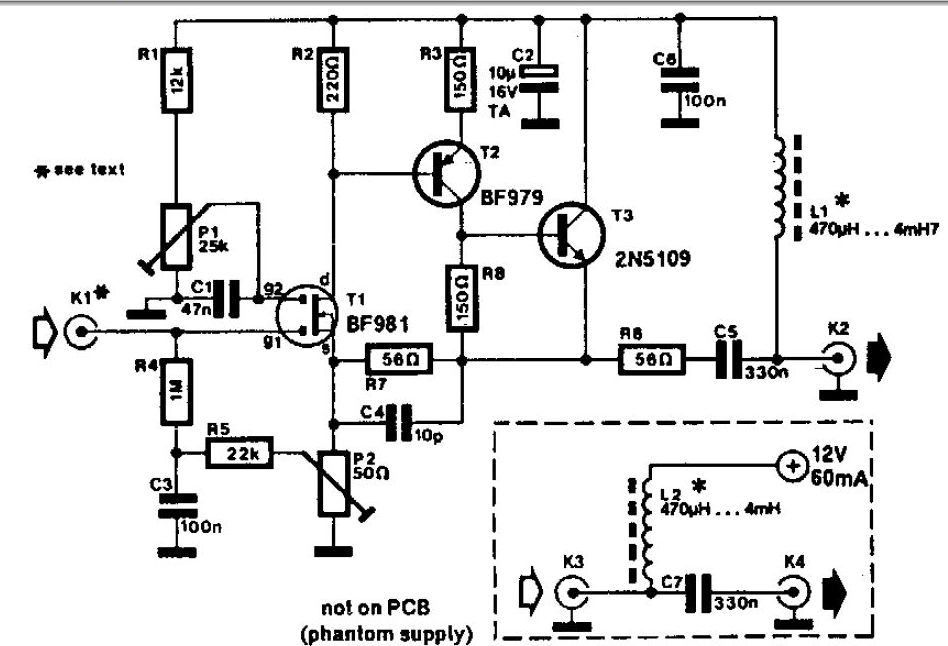
Five uses tri-state audio logic pen (CD4066 555) circuit diagram

The circuit diagram illustrates a five-use tri-state audio logic pen utilizing components such as the CD4066 and a 555 timer. The primary elements include a multivibrator, a four-way switch (CD4066, designated as IC1), and a gate circuit formed by various resistive and capacitive (RC) components. The multivibrator is constructed with the 555 timer (IC2) along with resistors R7, R8, R9, and capacitor C1. The frequency of the output signal is regulated by the on-off state of pin 3 of IC1.
The circuit operates by leveraging the CD4066, a quad bilateral switch, which allows for the routing of audio signals based on control inputs. Each of the four switches can be independently activated, enabling multiple audio paths to be selected. The multivibrator configuration using the 555 timer provides a square wave output, which can be used to toggle the control pins of the CD4066, thus determining which audio path is active at any given time.
Resistors R7, R8, and R9 are configured to set the timing characteristics of the multivibrator, while capacitor C1 serves to stabilize the timing intervals. The frequency output from the multivibrator can be adjusted by varying the resistance values or the capacitance, allowing for flexibility in the audio signal processing.
Overall, this circuit design is suitable for applications requiring the selective routing of audio signals, enabling functionalities such as audio mixing or switching in various electronic devices. The combination of the CD4066 and the 555 timer provides a robust solution for managing audio signals with precision and reliability.Five uses tri-state audio logic pen (CD4066, 555) circuit diagram is shown as the chart. The circuit is mainly composed of the multivibrator, the four-way switch CD4066 (IC1) and the gate circuit composed of some RC components. Multivibrator is composed of the 555 (IC2) and R7, R8, R9, C1, and its frequency is controlled by IC1-3 on-off state.
🔗 External reference
The circuit operates by leveraging the CD4066, a quad bilateral switch, which allows for the routing of audio signals based on control inputs. Each of the four switches can be independently activated, enabling multiple audio paths to be selected. The multivibrator configuration using the 555 timer provides a square wave output, which can be used to toggle the control pins of the CD4066, thus determining which audio path is active at any given time.
Resistors R7, R8, and R9 are configured to set the timing characteristics of the multivibrator, while capacitor C1 serves to stabilize the timing intervals. The frequency output from the multivibrator can be adjusted by varying the resistance values or the capacitance, allowing for flexibility in the audio signal processing.
Overall, this circuit design is suitable for applications requiring the selective routing of audio signals, enabling functionalities such as audio mixing or switching in various electronic devices. The combination of the CD4066 and the 555 timer provides a robust solution for managing audio signals with precision and reliability.Five uses tri-state audio logic pen (CD4066, 555) circuit diagram is shown as the chart. The circuit is mainly composed of the multivibrator, the four-way switch CD4066 (IC1) and the gate circuit composed of some RC components. Multivibrator is composed of the 555 (IC2) and R7, R8, R9, C1, and its frequency is controlled by IC1-3 on-off state.
🔗 External reference





